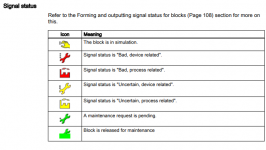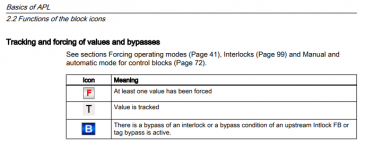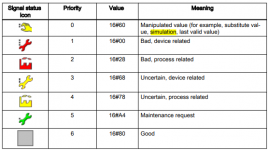4-20mA
an analog man in a digital world
- Location
- Charleston SC
- Occupation
- Process Control, Instrumentation & Electrical
I've been searching online and in what little literature we have for some icon descriptions for the smaller icons that appear in the displayable on-screen blocks, a Dose Block in this instance. I know what some mean, but some elude me and my semi-retired part-time programmer.
See the yellow hand and the red F, I would like to find a library or list of these just for my own reference. Maybe one of you Guru's can help, thanks.

See the yellow hand and the red F, I would like to find a library or list of these just for my own reference. Maybe one of you Guru's can help, thanks.






